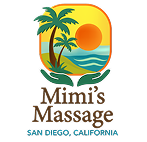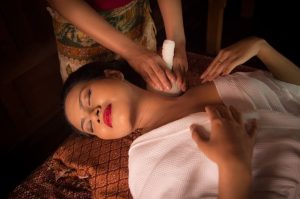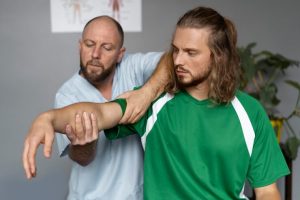San Diego’s year-round sunshine and mild climate create an environment where physical activity thrives. From surfers catching waves at Pacific Beach to runners tackling the trails of Torrey Pines, the city attracts athletes and fitness enthusiasts who push their bodies daily. This constant physical demand makes injury prevention essential for maintaining an active lifestyle.
Sports massage offers a practical solution for those who want to stay active while minimizing their risk of injury. This therapeutic technique goes beyond simple relaxation, targeting the specific needs of muscles and connective tissues that endure regular stress from exercise and athletic activities.
Sports Massage & Its Purpose
Sports massage focuses on treating soft tissue conditions related to physical activity. Therapists apply various techniques to address muscle tension, improve circulation, and promote faster recovery. The practice differs from general massage by concentrating on areas of the body that experience the most stress from repetitive movements and high-impact activities.
Athletes and active individuals benefit from this specialized approach because it addresses their specific physical demands. A cyclist, for example, develops different muscle patterns than a swimmer, and sports massage techniques can adapt to target these individual needs.
The treatment typically involves deep tissue work, stretching, and manipulation of muscles and connective tissues. Therapists assess movement patterns and identify areas where tension or restriction might lead to injury. By addressing these issues before they become serious problems, sports massage serves as a proactive measure in injury prevention.
How Regular Sessions Reduce Injury Risk
Muscle imbalances develop when certain muscle groups become stronger or tighter than their opposing muscles. These imbalances alter movement patterns and place excessive stress on joints and tendons. Sports massage helps restore balance by releasing tight muscles and improving flexibility in restricted areas.
Increased blood flow to muscles during massage sessions delivers oxygen and nutrients while removing metabolic waste products. This process supports tissue health and accelerates recovery after training sessions. When muscles recover properly between workouts, they maintain their strength and flexibility, reducing the likelihood of strains and tears.
Adhesions and scar tissue from previous injuries or overuse can limit range of motion and create weak points in muscle tissue. Sports massage techniques break down these adhesions, restoring normal tissue function and reducing vulnerability to re-injury.
Regular sessions also improve body awareness. As therapists work on different muscle groups, clients become more conscious of tension patterns and areas of tightness. This awareness helps athletes recognize early warning signs of possible injuries and take corrective action before problems escalate.
Specific Benefits for San Diego Athletes
The coastal environment and outdoor lifestyle in San Diego create distinct physical challenges. Surfers strain their shoulders and backs from paddling. Runners on varied terrain from beach sand to mountain trails stress their knees and ankles differently than those who only run on flat surfaces. Rock climbers at Mission Gorge tax their fingers, forearms, and shoulders.
Sports massage addresses these activity-specific demands. A therapist can focus on the shoulders and rotator cuffs of surfers, helping maintain the flexibility and strength needed for paddling while preventing common surfing injuries like swimmer’s shoulder.
For runners, attention to the legs, hips, and lower back helps prevent common issues such as IT band syndrome, plantar fasciitis, and runner’s knee. The massage work supports proper biomechanics and reduces the cumulative stress that leads to overuse injuries.
Beach volleyball players, cyclists, and hikers each face their own set of physical challenges. Sports massage techniques can be modified to address the specific muscle groups and movement patterns associated with each activity.
Timing Your Sessions for Maximum Prevention
Incorporating sports massage into a training schedule requires strategic planning. Pre-event sessions focus on warming up muscles and improving circulation without causing fatigue. These lighter sessions typically occur one to three days before competition or intense training.
Post-event massage helps flush out lactic acid and reduce muscle soreness. These sessions should happen within 24 to 48 hours after intense activity for maximum benefit. The work helps muscles recover faster and return to their normal resting length, reducing the risk of chronic tightness.
Maintenance sessions during regular training periods address ongoing issues and prevent new problems from developing. Most active individuals benefit from sessions every two to four weeks, though this varies based on training intensity and individual needs.
Athletes preparing for events like marathons or triathlons should increase session frequency during peak training periods. This additional support helps the body handle increased training loads without breaking down.
Integration with Other Injury Prevention Strategies
Sports massage works best as part of a complete injury prevention program. Proper warm-ups before activity and cool-downs afterward remain essential. Stretching routines, strength training, and adequate rest between workouts all contribute to injury prevention.
Hydration and nutrition support tissue health and recovery. Even with regular massage, dehydration and poor nutrition can compromise muscle function and increase injury risk. Massage complements these lifestyle factors but cannot replace them.
Cross-training reduces the risk of overuse injuries by varying the stress placed on different muscle groups. Combining sports massage with a varied training routine provides protection against injury.
Finding Qualified Practitioners in San Diego
San Diego offers numerous options for sports massage therapy. When selecting a practitioner, look for certification from recognized massage therapy schools and additional training in sports massage techniques. Experience working with athletes in your specific sport or activity provides added value.
Communication with your therapist ensures the sessions address your needs. Discuss your training schedule, upcoming events, and any areas of concern. A good therapist will adjust techniques based on your feedback and changing needs throughout your training cycle.
Consistency matters more than intensity. Regular sessions with moderate pressure often prove more effective than occasional deep tissue work that leaves you sore for days. The goal is to support your training, not interfere with it.
Long-Term Benefits for Active Lifestyles
San Diego residents who maintain active lifestyles into their later years often credit injury prevention practices with their longevity in sports. Sports massage supports this long-term approach by keeping tissues healthy and functional decade after decade.
The preventive benefits extend beyond immediate injury reduction. Improved flexibility and muscle balance reduce chronic pain and support better posture. These factors contribute to overall health and quality of life, making it easier to stay active as the years pass.
Investing in regular sports massage pays dividends in reduced medical costs, fewer missed training days, and sustained athletic performance. For San Diego residents who value their active lifestyle, this preventive approach makes practical and financial sense.







